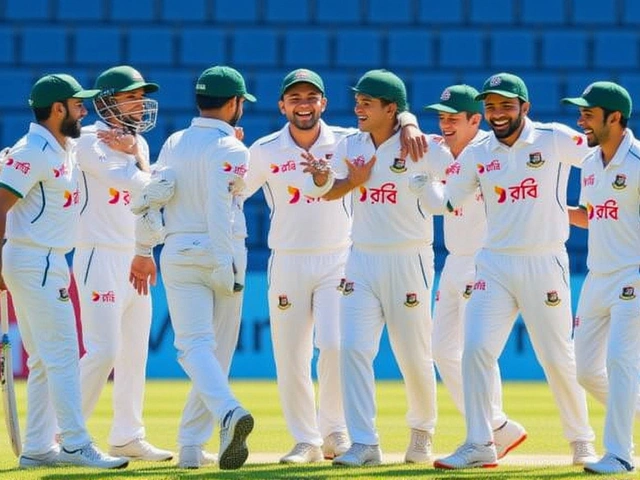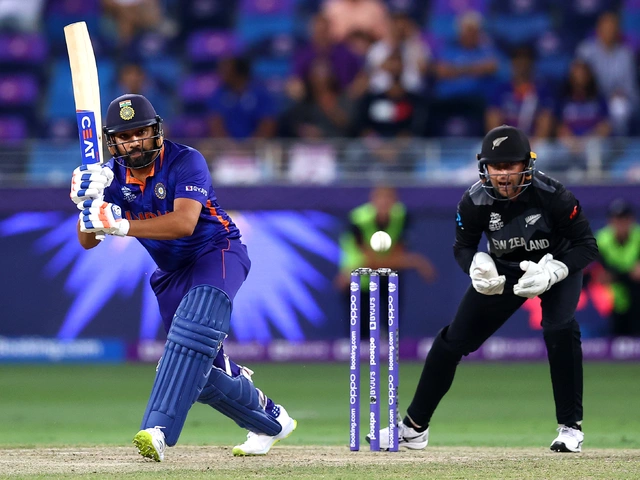Score: What It Means and Why It Matters
When talking about Score, the numeric result that tells you how many runs, points, or wickets a team has earned in a game. Also known as result, it serves as the simplest snapshot of who won and by how much. Understanding a Score helps fans, players, and analysts see the story behind every match.
In cricket, a Cricket match, a contest between two sides that can last from a few hours to several days revolves around the scorecard. The Run tally, the total number of runs a batting side accumulates is the heart of that scorecard. When a team posts a high run tally, the scoreboard instantly reflects dominance, but the underlying details—how many boundaries, how quickly those runs came, and how many wickets fell—add depth. That's why fans look beyond the headline number and ask, "How many runs per over?" or "What was the partnership like?".
How Bowling Figures Shape the Score
Every bowler contributes a set of Bowling figures, statistics like wickets taken, runs conceded, overs bowled, and maidens delivered. These figures directly influence the opponent's run tally. A bowler who locks down the run flow (low runs conceded) forces the batting side to chase a tougher target, effectively shrinking their final score. Conversely, a bowler who leaks runs can inflate the score quickly, especially in fast‑paced formats. The interplay between bowling figures and the run tally creates a dynamic where each wicket or maiden can swing the final score dramatically.
Major tournaments often showcase extreme examples. Take the Australia Women’s 326/7 win over New Zealand in Indore—their massive run tally set a daunting target, while disciplined bowling figures kept the opposition under pressure. Such matches illustrate that a high score isn’t just about power hitting; it’s also about containing the opponent's bowling attack. In World Cup settings, teams study past scores to plan strategies, aiming to either chase or defend numbers that have proven decisive.
The World Cup, the premier international cricket tournament that brings together the best nations amplifies every score. A century‑plus total in a World Cup game often becomes a headline, while a low-scoring thriller can be remembered for its nail‑biting finish. Fans track these scores not just for bragging rights but to spot trends—like how pitches in certain venues favor bowlers or batsmen, or how weather conditions affect the overall run tally. The 2024 Women's World Cup saw several teams posting scores above 300, underscoring the evolving aggressive style of modern cricket.
Scores aren’t limited to cricket either. In the posts collection you’ll find football match results, tennis set scores, and even video‑game leaderboards. Each sport uses a score to convey performance, but cricket’s scorecard is uniquely detailed, combining run tally, wickets, overs, and bowling figures into one comprehensive picture. Whether you’re a casual fan or a stats‑obsessed analyst, grasping how these elements interact helps you read any match outcome with confidence.
Now that you know what a score represents, how run tallies build the headline, and why bowling figures and tournament context matter, you’re ready to explore the specific examples below. The articles ahead break down recent high‑scoring games, explain key statistics, and give you practical insights to follow the next match with a sharper eye.

How the hell do you play and score in cricket?
- Date: 7 Feb 2023
- Categories:
- Author: Caden Fitzroy
Cricket is a popular game in many countries around the world. It is a team game played with a bat, ball and two wickets. The basic objective of the game is for one team to score more runs than the other. The game is divided into innings, with each team taking turns to bat and bowl. Batting involves hitting the ball and running between the wickets, while bowling involves delivering the ball to the batsman. Scoring is based on the number of runs scored and the number of wickets taken by each team. To determine the winner, the team with the highest score at the end of the game is declared the winner.




